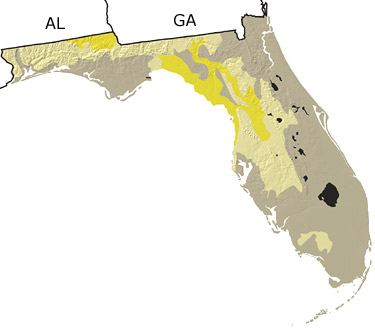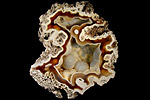Paleontology and geologyThe Precambrian, Paleozoic, and Mesozoic: There are no surface rocks exposed in Florida for the Precambrian through the Mesozoic, although some subsurface rocks do exist and provide us information about Florida’s early history. Prior to the Late Paleozoic, Florida was not attached to our continent. Some subsurface Jurassic rocks indicate that the state was originally part of the ancient southern hemisphere continent of Gondwana. During the Permian, Gondwana collided with what is now North America to form the supercontinent of Pangea. When plate movement tore Pangea apart during the Mesozoic, the crust beneath what is now Florida was left behind as part of the North American continent.
The Cenozoic: Cenozoic rocks are well represented in Florida. During the Tertiary, most of the state was covered by a shallow, tropical sea. Gastropods, clams, echinoderms, and other marine animals flourished in great abundance in the warm waters. Sea level fluctuated widely during the Quaternary as glaciers grew and melted in the far northern part of North America. Vast savannas formed during times of lower sea level, and mammoths, mastodons, horses, bison, and other large mammals roamed the state. |

